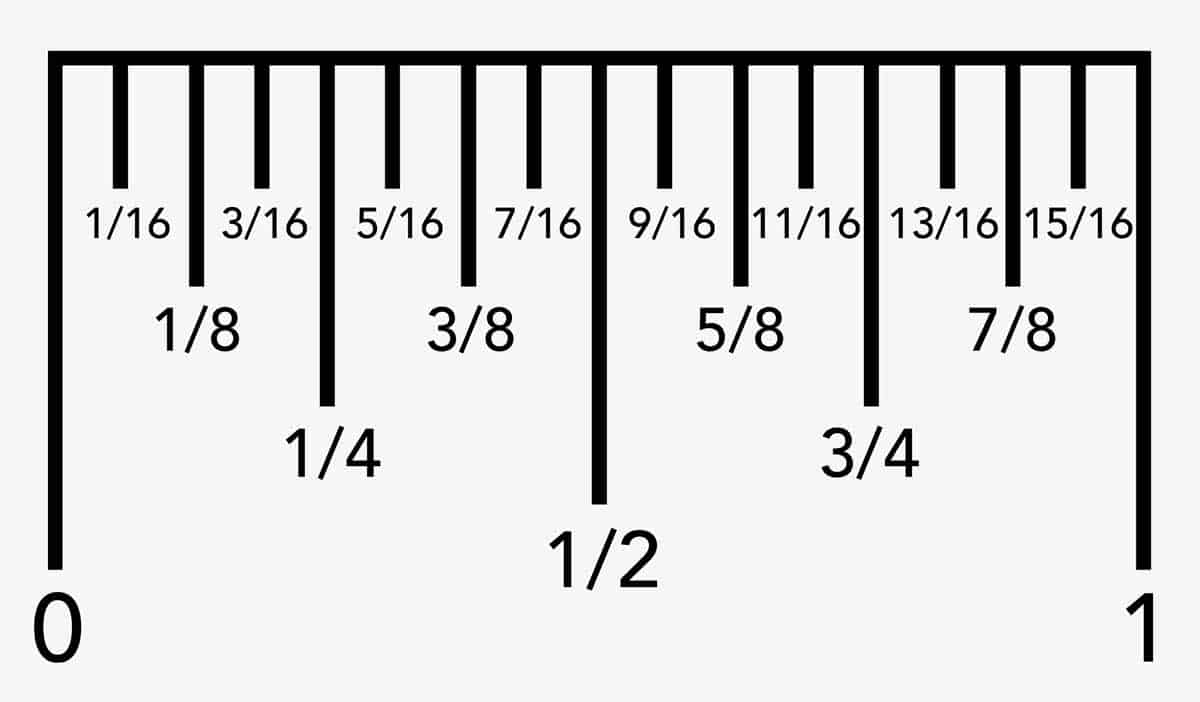Measurement is a significant part of our daily lives as we measure and evaluate weight, time, length, and other measurable aspects throughout the day. Consequently, measurement is a critical aspect and an essential subject in mathematics. Comparing sizes, evaluating dimensions, and reading through the standard objects can only be performed well if proper reading techniques are applied.
What is 3/8 inch on a ruler?
3/8 inches on the ruler represents a value between 1/4 inches and 1/2 inches, which equals 9.525 mm (9.53 mm) or 0.375 decimal inches. A 3/8 inch measurement can be found on many items, from construction materials to machining tools.3/8 inch, commonly referred to as “three-eighths of an inch,” is one of the most popular and valuable measurements used in everyday life.

To learn what 5/8 inches is on a ruler, read our article.
On a ruler, 3/8 inch translates to 9.53 mm or 0.375 decimal inches. It’s important to note that the 3/8 measurement does not adhere strictly to the imperial units system but instead provides its standard measure of use in production and engineering applications.
In terms of more exact measurements, this fractional size is most commonly expressed as either inches or 9.53 millimeters (mm). This equates to precisely three-eighths (or 1/precisely n three-eighths) being rounded slightly to account for slight discrepancies within some manufacturing processes or machining tasks that require exact fractions or decimals due to the limitations of available tools and machines. The conversion between inches and millimeters means that a 3/8 inch measurement would measure approximately 23mm if converted directly into metric units.
When using rulers for measuring purposes, it’s essential to be aware that crucial will not have a full range of markings for every fractional measurement size available; any given ruler may skip specific sizes such as 0.25 (1/4), 0. dimensions/10) or even 0.375 (3/8). This means that when measuring objects with particular accuracy requirements, it may be necessary to utilize multiple rulers to ensure actual toons are being met, rather than relying solely on one ruler alone, which may not contain every fractional size required for the task.
To find 3/8 inch on a ruler, you should first locate the nearest marking that matches the fraction you need – usually 1/16th (0.0625) – and then count up three lines until you reach your desired fractional size: 1 x 1/16 + 2 x 1/16 = 3 x 1/16 = 0.1875 = 3 x 1 / 8 = 0 .375 = 3 / 8 inch.
It’s also worth noting that these measurements can vary depending on the type and brand of ruler being used—some more expensive models tend towards higher accuracy levels, whereas cheaper versions may be less precise overall. So, users should always compare multiple rulers before making their final decision regarding whichever model best suits their needs when working with particularly tight tolerances or exact specifications.
Apart from using rulers f. measuring small objects such as screws and other small pieces of hardware, this same fractional size can also be found throughout many other everyday applications, including carpentry work where board dimensions are marked and cut according to specific measurements such as 2x4s being cut into smaller pieces like 4x2s – each piece requires accurate measurements otherwise they won’t fit properly together once assembled – or construction work where bricks have certain sizes corresponding directly with specific fractions like “half brick” walling which requires two-quarter bricks per full-length unit resulting in an accurately measured wall structure when built correctly according to plan.
Overall, it can be said with confidence that understanding what 3 / 8 inch on a ruler is is essential knowledge for anyone who works with construction materials or machinery requiring exact tolerances for them to complete projects within acceptable parameters while still achieving optimum results in terms of accuracy and precision desired by end users.
- Facebook Ads to Get Followers! - December 27, 2024
- ClickUp vs. Slack - December 20, 2024
- Mastering E-Commerce Analytics: A Blueprint for Success





